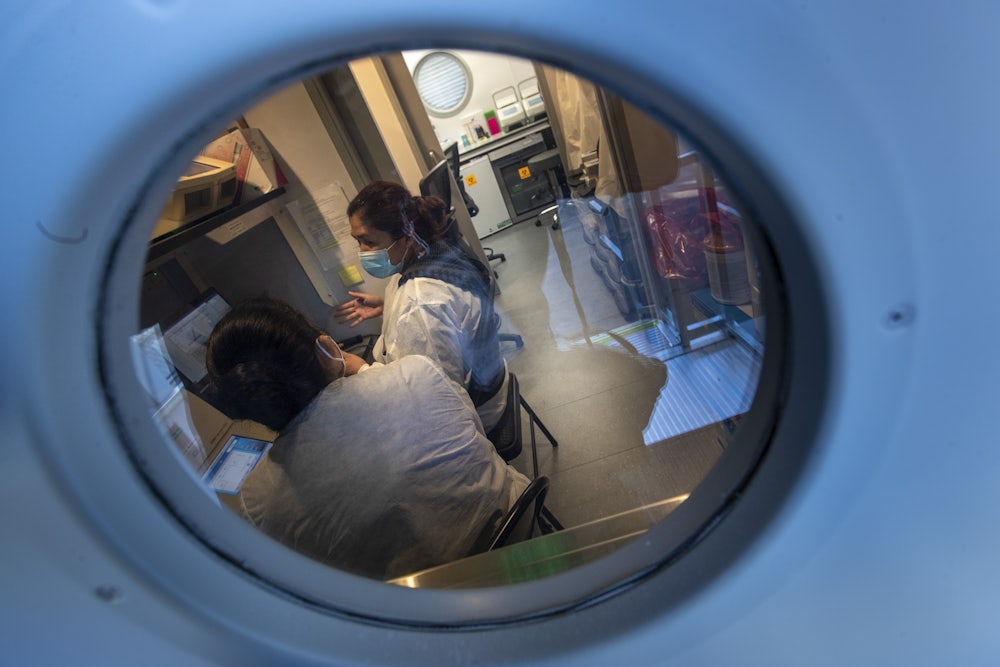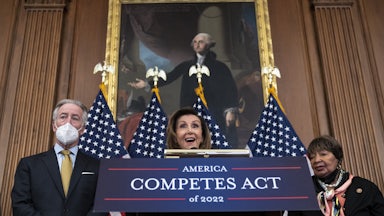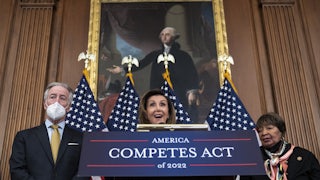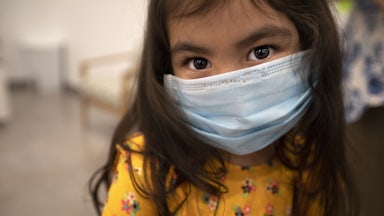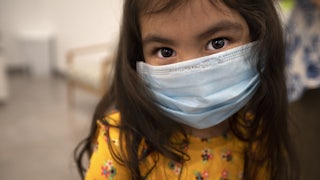When Covid-19 hit the United States, the California Department of Public Health wasn’t ready. The reason had to do, at least in part, with a little-observed split between the state’s chronic disease experts and their infectious disease counterparts.
That’s what Michael Lewis showed in his 2021 book, The Premonition, which chronicled the impasse between Charity Dean, the department’s assistant director and an infectious disease detective, and her boss, Sonia Angell, the department’s director and an expert in nutrition and hypertension. Dean foresaw the Covid-19 catastrophe, thanks to an indescribable sixth sense from a childhood spent reading about past disease outbreaks. “It has started,” Dean wrote in December 2019. But when she brought the potential peril of the SARS-Cov-2 virus to Angell’s attention, her boss reportedly banned her from using the word “pandemic,” told her to erase her whiteboard then covered in scary Covid math, and began systematically to shut Dean out of memos and meetings.
The initial response to Lewis’s bestseller focused on its often one-sided structure, mythological quality, and damning critique of the Centers for Disease Control and Prevention. But as the U.S. marks the approach of its second Covid-19 anniversary, with public authorities still openly feuding over when to end mask mandates and how best to keep Americans safe, it’s time to refocus on The Premonition’s biggest, if easy-to-miss, message: that “trusting the experts” and “listening to the science” isn’t always easy, especially when health officials themselves can’t even seem to agree. And that our national, state, and local public health bureaucracies need to be set up in a way that properly values different types of expertise.
For many Americans, Covid-19 has been their first opportunity to see the enormous challenge of creating scientific consensus on an emerging issue. Unfortunately, the experience is further complicated by the fact this country’s public health infrastructure is crumbling. Investment in public health has been shrinking for years—that much is widely known. So, too, is the fact that epidemiologists, doctors, and scientists have often had their voices silenced by politicians who find their discoveries inconvenient. But what’s less appreciated is that infectious disease specialists—who deal with organisms like bacteria, viruses, fungi, parasites, and prions and their consequences for human health—have been particularly hard hit. For at least a decade, more than 20 percent of training positions in the discipline have gone unfilled each year. And those who do specialize in infectious disease are some of the lowest-paid doctors in the country. “The trend that’s undeniable is that fewer and fewer people are interested in going into infectious diseases,” one infectious disease doctor told STAT News in 2015.
In California, the consequences of this teetering system played out as poorly as you’d expect: On January 25, 2020, the state’s first case of Covid-19 was reported in Orange County, in a man who had recently traveled to China. On January 31, Angell released a statement featuring what had become a mantra for her team: “The risk to the general public in California remains low.” Though cases mounted, it took until March 4—almost six weeks after the state’s first confirmed case—for Governor Gavin Newsom to declare a state of emergency. Two years of ceaseless death later, and Dean’s agitation has never seemed more reasonable.
The pandemic has continued to exacerbate the nation’s slow-motion public health crisis: By the end of 2020, 181 public health leaders in 38 states had resigned, retired, or been fired—a cataclysmic brain drain. By mid-2021, at least 20 states had passed laws making public health measures designed to curb the virus’s spread all but impossible to instate. And those public health officials who are still working find themselves struggling, in real time and in public, to manage a shape-shifting pandemic that generates constant conflict even among the experts. Just this month, Democratic governors in California, New Jersey, Oregon, Connecticut, Delaware, New York, and Illinois have announced they are or will soon be lifting mask mandates, at the same time that the CDC reiterated its stance that “now is not the moment.”
While The Premonition might read like any other workplace dispute, the truth is that Angell and Dean never needed to be in conflict in the first place: An infectious disease expert needn’t work beneath a chronic disease expert, or vice versa. While the two fields are lumped together under the current incarnation of public health bureaucracy, and any physician may choose to develop real expertise in both fields, chronic and infectious disease management are fundamentally different jobs—and often different worldviews. As the American public health system begins to take stock of this pandemic’s lessons, and works to prevent the next one, formally cleaving these responsibilities, especially at the state level, would be a good place to start.
America’s first big wave of public health reforms was wildly successful. Early childhood deaths began to plummet, thanks in part to early-twentieth-century sanitation efforts. Postwar vaccination campaigns started to beat back lingering infectious disease. By the 1960s, epidemiologists refocused their efforts on chronic illness like heart disease and cancer, which were fast becoming the leading causes of death. By that point, American medicine had supposedly “closed the book” on communicable disease.
Such an idea was always a little laughable. Pathogens have a knack for outsmarting humans, and humans aren’t always so cooperative, either. In more recent years, public health’s unprecedented success began to brew its own backlash: Anti-vaccination sentiments may be partially driven by growing emotional distance from the deadly infections of the past. But it took the ongoing Covid-19 pandemic to reveal the frustrating truth decisively—that infectious disease and chronic illness have always existed side by side and always will.
Accepting this grim reality, and reorienting around it, has proven challenging. While all doctors must meet the exacting standards of their licensing boards, the nitty-gritty of public health work is often learned on the job. In Dean’s case, she was finishing up a residency in internal medicine when she was asked to consider a role as a health officer for Santa Barbara County—a low-paying position she could afford to take because her husband was a highly paid physician in his own right. Intrigued, Dean read the law and discovered that California gave extraordinary latitude to its public health officers, each of whom can declare a health emergency and then take any “preventive measure” they deem appropriate. Armed with the health and safety code, Dean began hunting down cases of meningitis, tuberculosis, hepatitis, and more in order to contain the infectious agents before they could spread.
Angell, by contrast, began her career as a physician in a community clinic. She went on to become the founding director of New York City’s cardiovascular disease prevention program, where she restricted trans fats in local restaurants. Later, Angell moved to the CDC’s Global Noncommunicable Disease Unit, where she worked on heart disease, cancer, lung disease, and diabetes. That’s ultimately why Newsom tapped her for the top job in California in 2019: Heart disease is and remains the leading cause of death in the U.S. and a leading public health priority. But Covid-19 came knocking.
Having Dean and Angell, two of the brightest minds in their respective fields, at the helm of California public health should have set the state up for success. They could have led their own teams to combat the virus and other, ongoing issues simultaneously. But the current structure of public health departments—a single, underfunded entity in each community, responsible for tracking, preventing, and containing diseases of all types—is one in a list of dozens of factors that hampered the pandemic response in California and across the country.
It’s had terrible results for chronic illness outcomes, too. In October 2021, more than 220 local public health departments told The New York Times they had been forced to “temporarily or permanently abandon” other initiatives, like their response to the opioid crisis, to focus exclusively on the pandemic. Social distancing policies that delayed routine screenings and “nonessential” surgeries will likely lead to a surge in advanced cancers. Long Covid, a wide range of health issues that occur in some people who are infected with Covid-19 and never completely recover, is already creating a “tsunami of disability.” And it’s possible that some people who had an acute Covid-19 infection and got better will still be more likely to develop other chronic conditions down the line.
However you look at it, the current incarnation of American public health isn’t really working for anyone. Both Dean and Angell resigned from their posts in the summer of 2020. And years deep into this pandemic, the same statistic—a daily average infection rate of 23,000 trending down—can be read as evidence for easing up on Covid restrictions or for cracking down. The difference depends less on whether you’re “listening to science” and more on the scientist at the top of the org chart.
Ultimately, there will never be a perfect solution to this pandemic, but that’s not an excuse to give up trying. Local data, when properly collected and thoughtfully applied, remains the most relevant for day-to-day decision-making. And protecting the elderly, the immunocompromised, and unvaccinated children under five is a shared responsibility, even when boosters and one-way masking are often effective.
But balancing these factors isn’t on the individual, crunching the numbers in isolation—it’s on public health leaders and, in particular, the infectious disease experts who have spent their lives reading up on outbreaks past and covering their whiteboards with projections about outbreaks coming our way. The pandemic has shown us just how desperately we need to invest in public health in this country. But it’s also shown that how we structure the public health bureaucracies may matter just as much as how much we spend.
